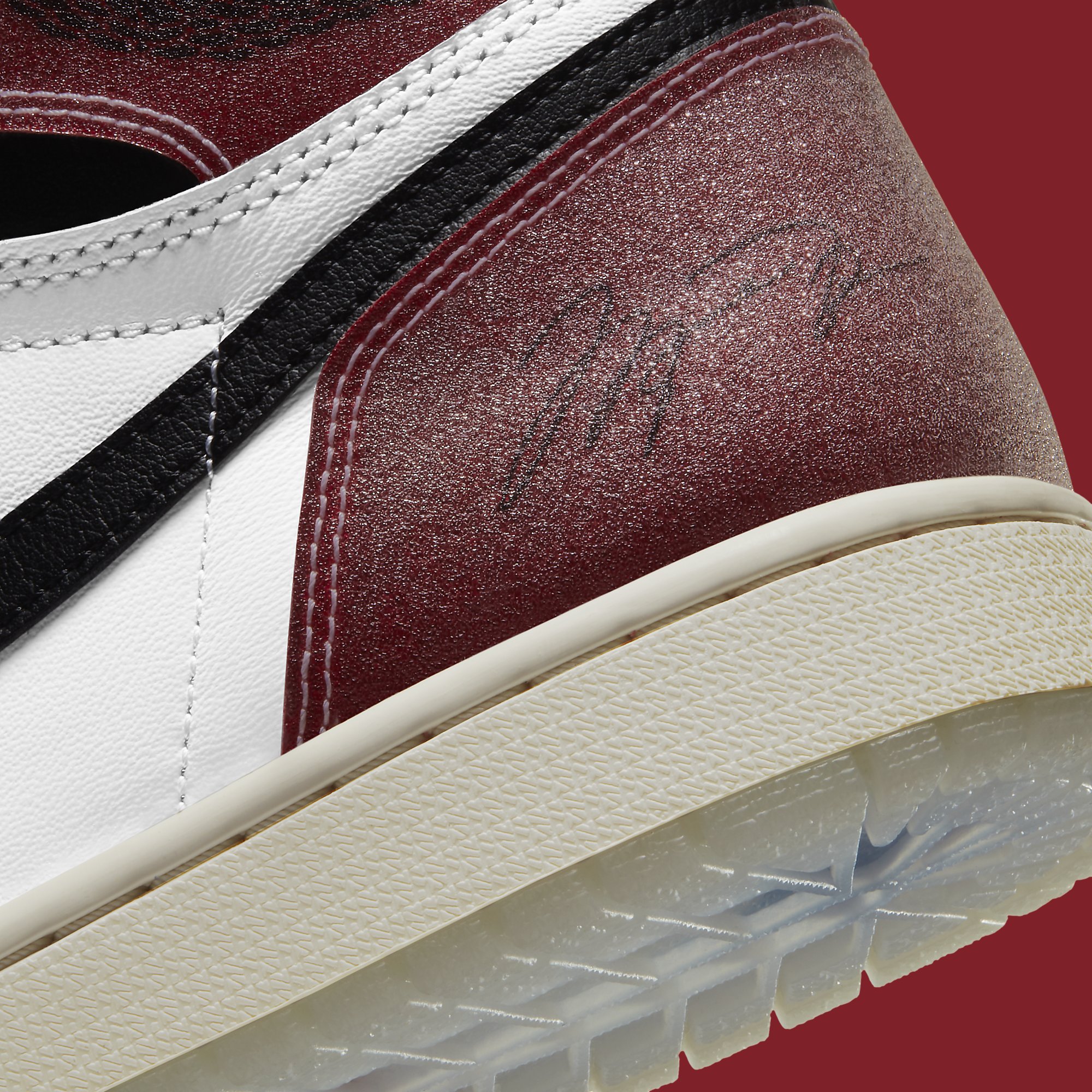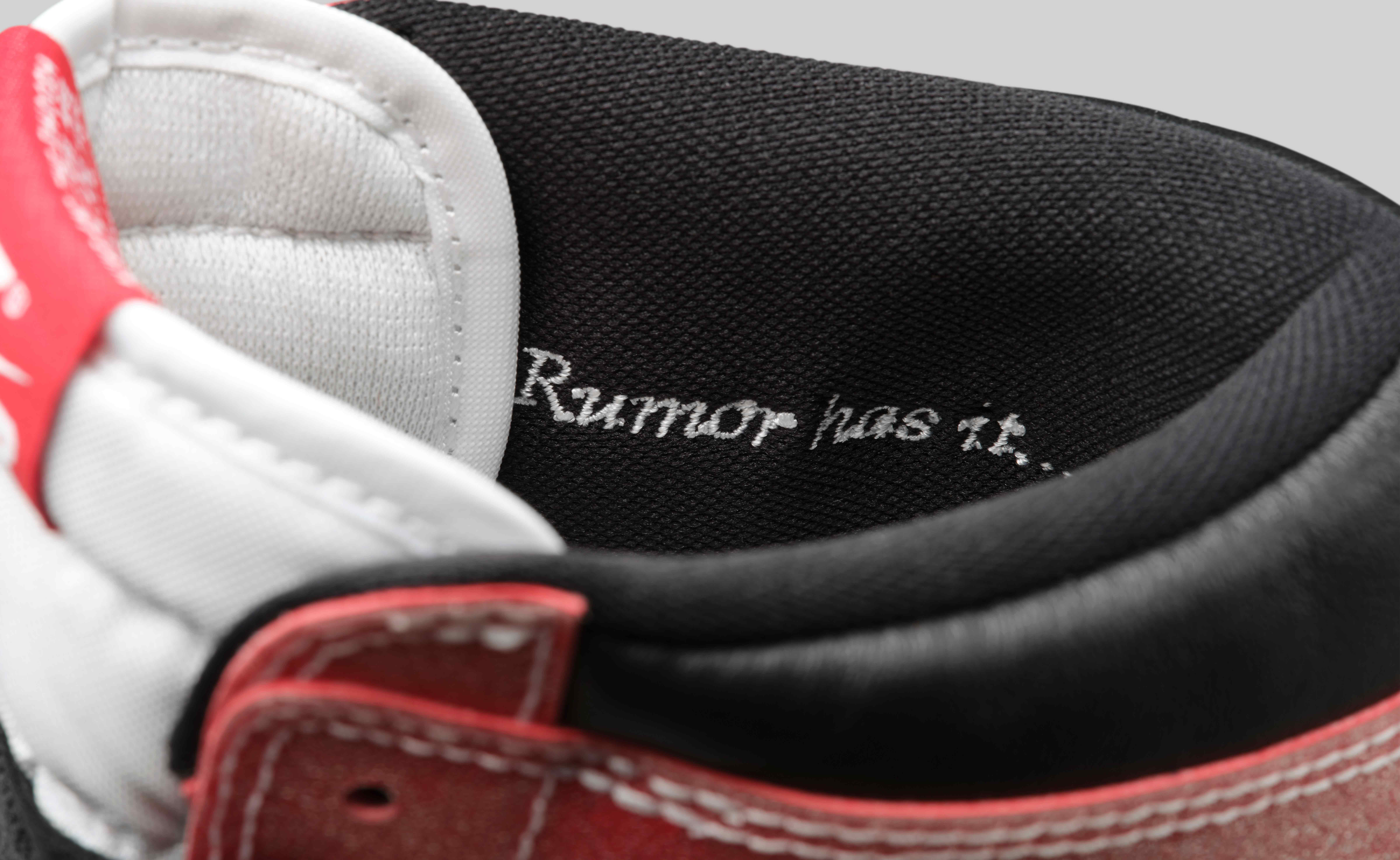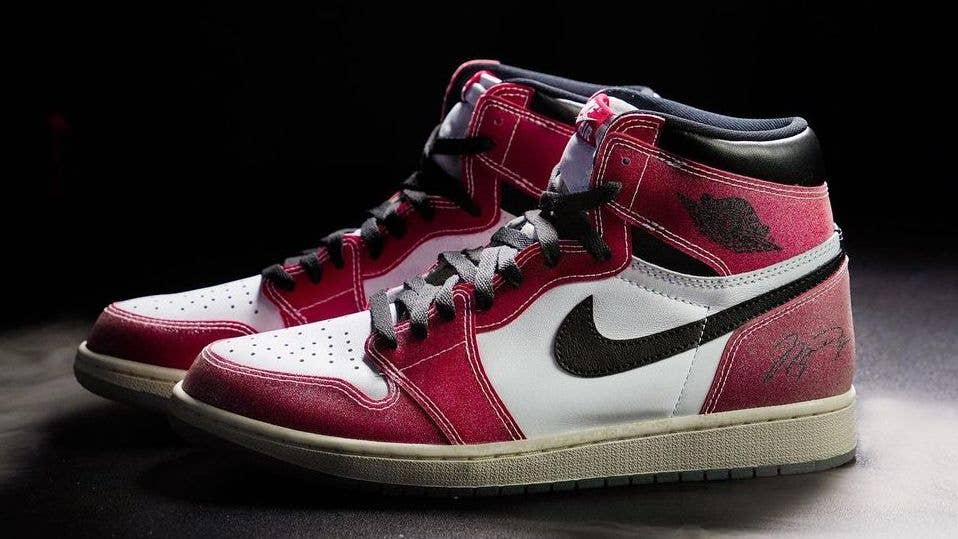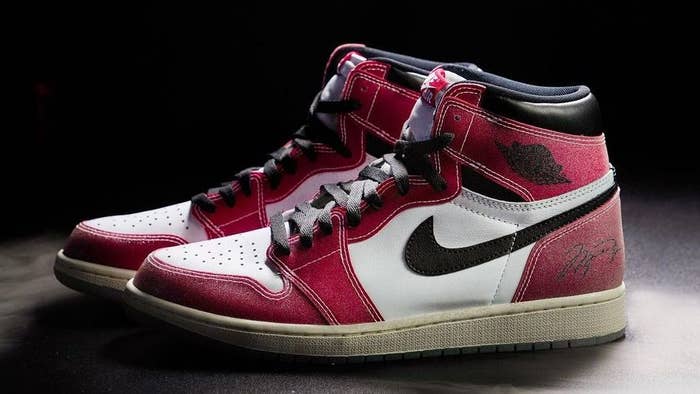
Limited-edition sneakers, the kind that people line up or crash feeble websites for, present the stores that stock them with an almost impossible set of equations. Brand calculations around supply and demand mean there are always more customers than there are shoes. The cost and effort required to launch hype sneakers fairly—hiring security to tame rowdy crowds, paying extra to bot-proof an online shop—can eclipse what money there is to be made by selling them at their suggested retail price. Remember, these items are limited by nature. They are generally not breadwinners, given the small quantities they come in.
How stores handle these drops, how they approach the equations of a high-profile shoe, either cements or sullies their reputation. At the launch of every coveted pair, they are judged by patrons to have found an equitable system or succumbed to the temptations of bad math. The Trophy Room x Air Jordan 1, a sneaker mired in controversy, conspiracy theory, and allegations of retail grift, is a style that has generated this kind of intense judgment.
The shoe is a collaboration between Jordan Brand and Orlando-based store Trophy Room, which was founded in 2016 by Marcus Jordan, son of the Nike-owned sneaker brand’s namesake. Its design reworks the Chicago Bulls colorway of Michael Jordan’s iconic first signature sneaker with a glittery frozen treatment that represents him being “frozen out” of the 1985 NBA All-Star Game.
The Trophy Room x Air Jordan 1, limited to just 12,000 pairs, has been scandalous from when it first leaked up through its messy release last Wednesday. When people flaunted pairs on social media before they were officially unveiled, Marcus blamed it on thieves somehow snatching them from a Nike distribution center. When still more Jordan 1s flooded the resale market in the weeks before they were officially released, social media blamed it on Marcus and accused him of selling thousands of pairs early and reaping massive profits by essentially reselling his own sneakers.
Multiple sources, some of whom had access to the sneakers themselves, tell Complex that Trophy Room sold a substantial portion of its stock to resellers for well over the $190 retail price ahead of the release date. The details in their accounts differ, but they agree on the big picture. Trophy Room, they say, sold thousands of pairs early for around $1,000 per pair. One source says a small group of longstanding buyers was allowed to get in at $850 per pair, while others were charged closer to $1,200. Another showed Complex tracking info for a shipment coming from Orlando, days later sending a photo showing boxes of the shoes stacked high. Some say there were group buys, where individuals pooled money to acquire pairs in bulk, since the shoes had to be purchased in lots. If such a scheme were indeed executed, Trophy Room essentially cheated the equation, denied the public a fair chance at the collaboration, and likely made millions of additional dollars through this surreptitious selling.

That has been the prevailing storyline in the buildup to the Trophy Room x Air Jordan 1, but it doesn’t necessarily preclude other explanations for the abundance of pairs floating around before the release. The explanation from Marcus when the sneakers unexpectedly hit the internet in December was that “sheisty brothers” at the Nike distribution center in Memphis, its largest worldwide, got pairs even before Trophy Room did. The center has for years been a suspected source of sneaker leaks and Nikes that go up for sale on secondary markets well in advance of their authorized release, much less their public unveiling. The first person to post a pair of Trophy Room x Air Jordan 1s with the full packaging was Lawrence Harwell, who goes by @dasouthmemphian_ on Instagram. (His posts include a few canceled Nike sneakers that never saw retail release, but were nonetheless obtained by resellers.) The Memphis-based Harwell uploaded video and multiple photos of the shoes on Dec. 4, prompting a Twitter response from Marcus.
“Funny thing is, we haven’t even paid for the sneakers yet,” he wrote, adding a frowning emoji. “Up until recently, I wasn’t even told they were in America.”
Marcus’ references to the shoes have sought to distinguish those pairs he’s suggested were stolen from Nike in Memphis from those sold through Trophy Room. The main point of differentiation, in his presentation, is a set of blue laces he showed in his own previews that weren’t in any of the leaked images. His narrative is that only the pairs of Trophy Room x Air Jordan 1s that have the blue laces are authentic pairs originating from Trophy Room.
“If it ain’t got a blue lace, they didn’t come from us,” Marcus told Complex in a brief comment for this story.
The early pairs didn’t have blue laces; neither did any of those acquired by resellers before the shoe’s release. The ones sent to athletes and celebrities directly by Jordan Brand, like Jordan-affiliated rapper Bun B, didn’t have blue laces either, though, meaning their presence wasn’t a prerequisite to confirm authenticity. The laces quickly became infamous, themselves a meme and fodder for suspicions about Marcus going to great lengths to conceal the fact that he’d allegedly sold many of the shoes before their release date.
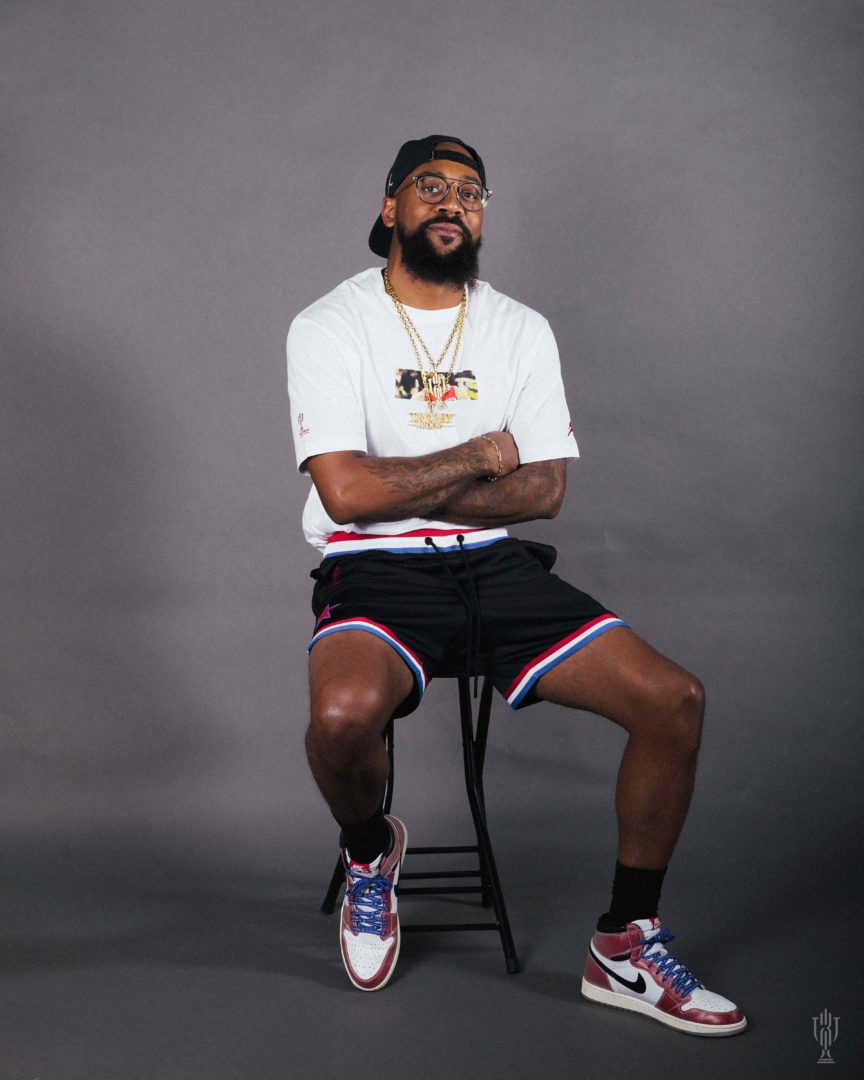
In this theory, the Trophy Room owner scrambled to produce blue laces as a cover-up. That way, commenters on social media speculated, he could claim no involvement in the early pairs he’d sold that didn’t have them. If someone didn’t have the blue laces, they didn’t buy them from Trophy Room, hence they definitely didn’t buy them three weeks early for $1,000 just so they could resell them to someone else down the line. A source with knowledge of Jordan Brand’s release plans tells Complex, though, that Marcus had wanted to use the blue laces from the start, and they were not an elaborate decoy.
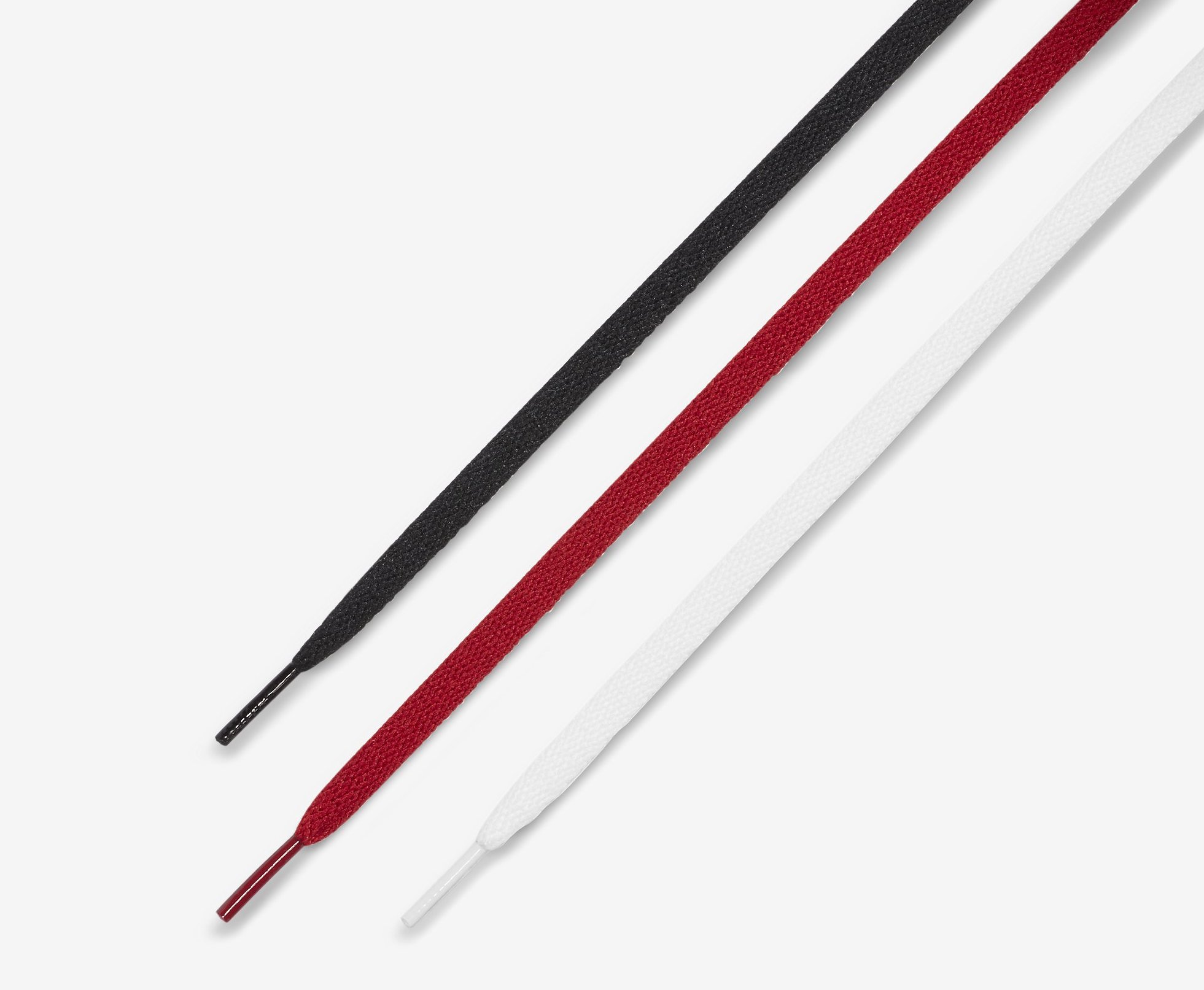
Few sneakers inspire the level of conjecture and rabid attention the Trophy Room x Air Jordan 1 has, even though so many have a similar story. Almost every sneaker’s official brand rollout is preceded by a leak. Almost every sneaker is available for costly resale prices before its release. If there is a new Off-White x Nike project or a pair of Yeezys releasing on any given weekend, there are stores around the world who have already moved their stock, selling it to resellers for a premium, enjoying higher profits, and avoiding the strain of actually trying to release the sneakers in accordance with brand guidelines. Backdooring—as in, someone is secretly selling pairs out of a store’s backdoor while naive customers on the store floor stand no real chance at them—can help offset a store’s expenses. Setting morals aside, the numbers just make sense.
“Almost every store is forced or obligated, in my opinion, to have to sell pairs at a higher rate earlier than they’re supposed to,” says Jaysse Lopez, who owns a Las Vegas sneaker store called Urban Necessities. “Because that’s just the reality of business.”
He used to get mad at the idea of people backdooring sneakers until he opened his own store and realized what kind of overhead business owners were dealing with. Urban Necessities operates on a consignment model, meaning Lopez doesn’t own the stock, nor does he have an account with any of the major sneaker brands. He doesn’t have access to shoes at wholesale prices that he could resell for secondary-market prices, but doesn’t fault anybody who does. Even if they could damage their relationship with brands like Nike in the process.
“The reward is worth the risk in that scenario,” Lopez says.
He’s not eager to pinpoint where he thinks the early pairs of Trophy Room x Air Jordan 1s came from, but doesn’t necessarily believe that Marcus Jordan is the culprit behind their appearance.
“I think it’s more realistic that it found its way out of a warehouse before it made its way to where it needed to go,” Lopez says.
That people are less attracted to this version of the story owes partly to the fact that it does not involve Michael Jordan’s son. The high drama of a sportswear industry scion possibly plotting to sell off his sneakers like a cartel kingpin, offering connected buyers the best prices and then letting the work get passed through the supply chain and broken up, is more alluring than sneakers disappearing from a truck at a Memphis loading dock. Again, sneakers get backdoored every weekend, but the majority have not captivated imaginations like the Trophy Room x Air Jordan 1.


